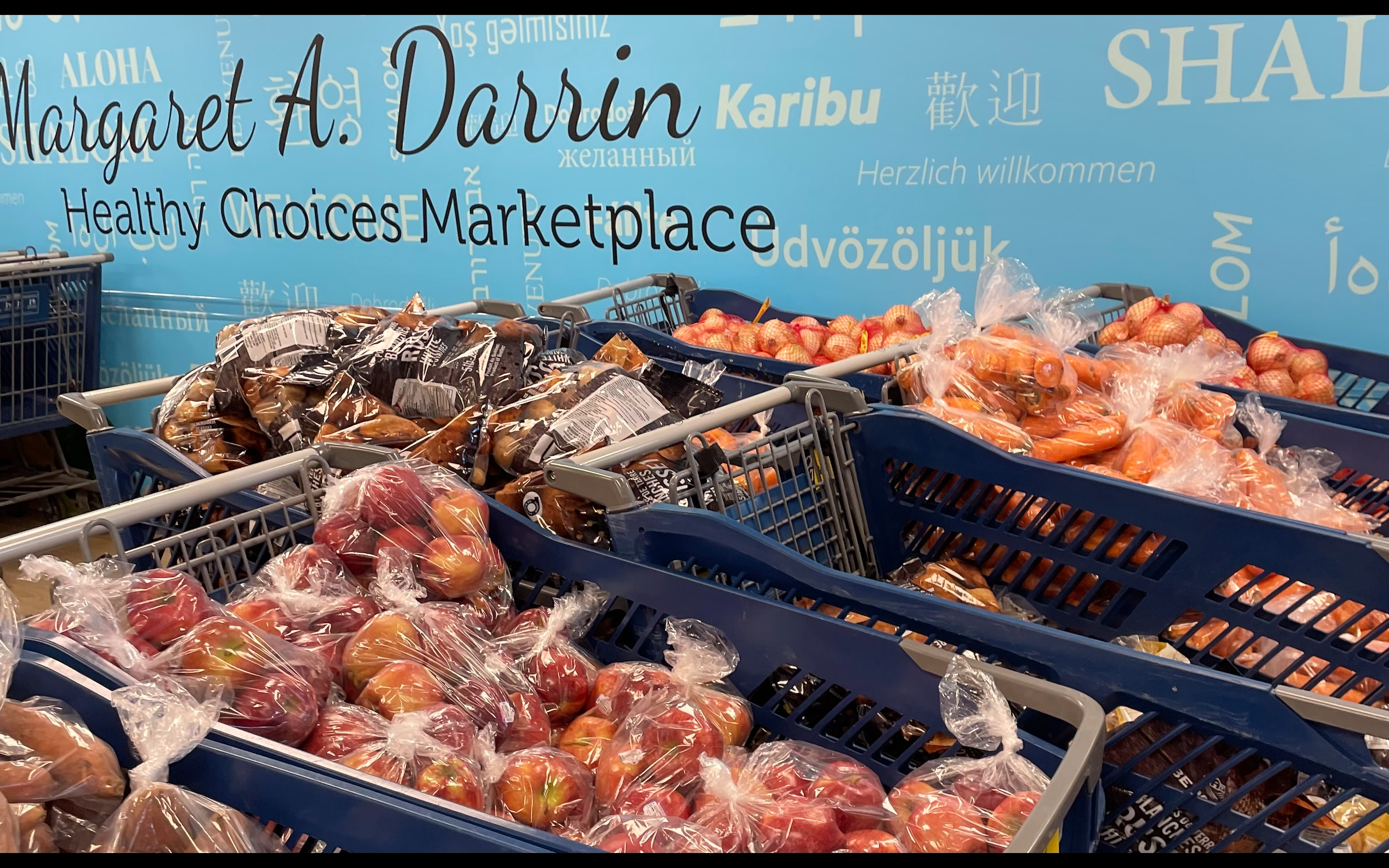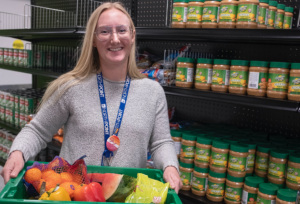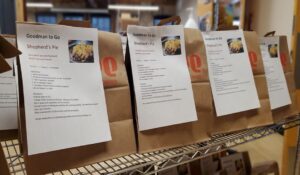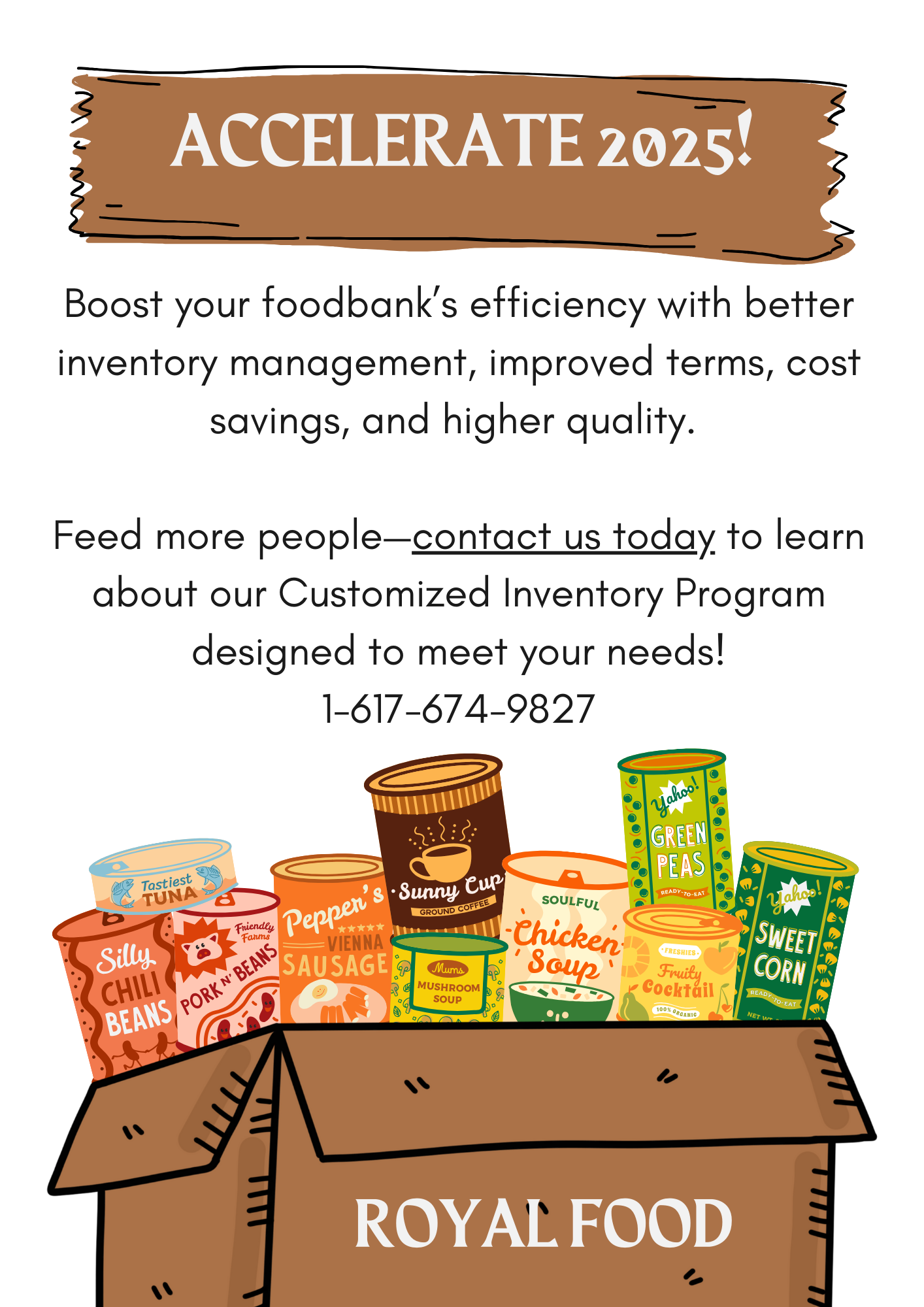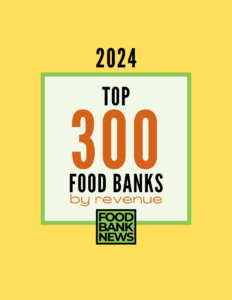Like many food pantries, Interfaith Food Pantry Network of Morris Plains, N.J., turned to drive-through distribution during the pandemic.
While the drive-throughs were efficient, the pantry’s interactions with clients started to feel hollow to Carolyn Lake, Executive Director. Some clients tried to convey their food preferences as they rolled on through the line. Others visibly wanted to pause and have a chat.
“I didn’t know who they were anymore,” Lake said of her clients.
Interfaith is part of a growing wave of food pantries that are choosing to recommit to in-pantry client-choice distribution, following pivots into less personal drive-through or curbside distributions during the pandemic. Grab-n-go distributions held an allure even as the pandemic wound down, given the time-savings and convenience they can offer clients. But for many pantries, the transactional nature of grab-n-go was starting to wear thin.
“I knew we needed to re-establish a connection,” Lake said.
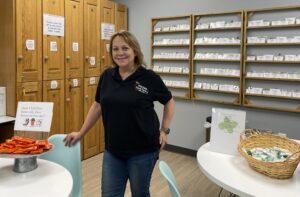
Interfaith had run a grocery-store style pantry before the pandemic, letting clients pick and choose their food items. Post-pandemic, it wanted to get back to choice distribution – and it wanted to do it in a big way, given the large increase in the number of people it was serving, and the amount of fresh produce it was distributing.
That wish resulted in a $1 million renovation of its pantry, allowing it to greatly expand its original shopping space into a Healthy Choices Marketplace, as well as provide an area full of comfortable seating for people as they waited to shop. The renovation also added a 720-square-foot cold storage unit, increasing the pantry’s capacity to hold produce, dairy and proteins by 550%.
Besides eliminating waste, the new marketplace and welcome area raises opportunities for clients, volunteers and staff to connect, and ensures guests find their way to other social services they might need. Lake noted that “neighbors helping neighbors” was a founding mantra of the pantry, which has always had the goal of being community-based. “We’re trying to still carry that spirit,” she said.
The ability to offer access to wraparound services on site was one reason for Daily Bread Food Pantry of Danbury, Conn., to embark on a major upgrade of its space. The organization is leasing the first floor of a former military museum to create a 6,000-square-foot “super pantry” with room for guests to shop and for local social service agencies to set up temporary information tables. The new space will replace the limited choice, outdoor grab-n-go distributions that the pantry has been holding since the pandemic.
The new pantry will feature greatly expanded hours, giving clients the luxury of time to choose the food they want. It will be open six days a week for six hours a day (including some evening hours), up from the current 1.5 hours offered twice a week. Pantry officials figure clients may take 20 minutes or so to complete a shop, weaving their way through a brightly lit space designed to be dignified and respectful. “What we’re trying to do here is not serve more people,” said Peter Kent, President. “The idea is to serve everyone we do serve much better.” It’s the opposite of a grab-n-go model, which makes it easy to serve a lot of people in a very short period of time, he noted.

The super pantry is expected to open in fall 2024, following a renovation expected to cost less than $500,000. Food pantry personnel have already put a lot of thought into the flow of the client experience. For example, guests will immediately encounter fresh produce after checking in, as a nudge toward making that healthy choice. And they’ll only see other social services once they’ve completed their shopping. “We came to the conclusion it probably made more sense to have the social service area at the tail end of the shopping, as opposed to at the beginning, when people are anticipating getting their food,” said Debbie Landzberg, Past President.
At LifeWorks Community Action in upstate New York, a number of different pivots have led it to offer full client choice via an online ordering system. The organization moved from offering pre-packed bags, to embracing client choice just before the pandemic, to shutting down briefly during the pandemic. As it cast about for ways to serve its clients, the pantry recognized that transportation had long been an issue. With no good alternatives during the pandemic, it decided to mobilize a home delivery operation.
“Fast forward, we are now a delivery pantry with an online storefront,” said Angelo Calbone, Director of Community Services.
LifeWorks now delivers food to about 800 people, giving them a full choice of items in stock through an online system supported by PantrySoft. The nonprofit does not place any restrictions on who can receive a delivery and has about 40 volunteer drivers (up from four pre-pandemic).
About three-quarters of clients place their orders via the web, while another 200, who are mostly elderly or do not have a reliable internet connection, place their orders by phone. “That’s a lot of work,” said Calbone, referring to the phone orders.
Certainly, the re-energized movement toward client choice is not universal. At Laguna Food Pantry in Calif., for example, limited parking means that drive-through distribution (with modified choice) is still in favor. Even Interfaith Food Pantry Network may offer a drive-through option for seniors who prefer not to get out of the car. But, Lake noted, “We don’t want to do it for everyone because we don’t want to undermine choice.” – Chris Costanzo
CAPTION FOR PHOTO, TOP: Interfaith Food Pantry Network’s new Healthy Choices Marketplace features fresh produce selections.
Like what you’re reading?
Support Food Bank News
